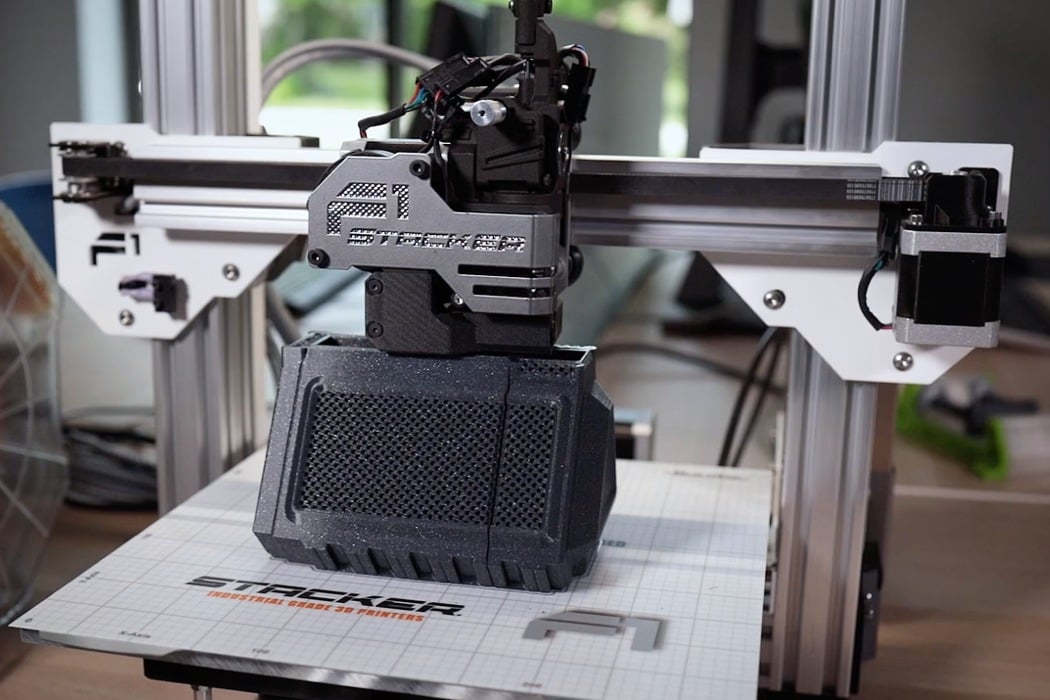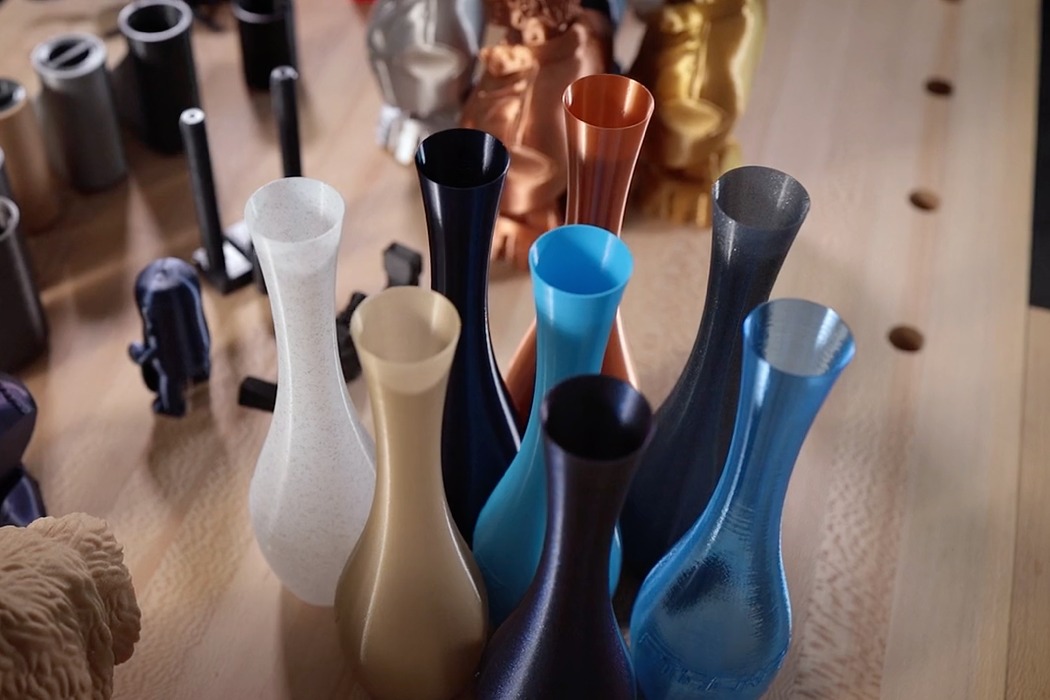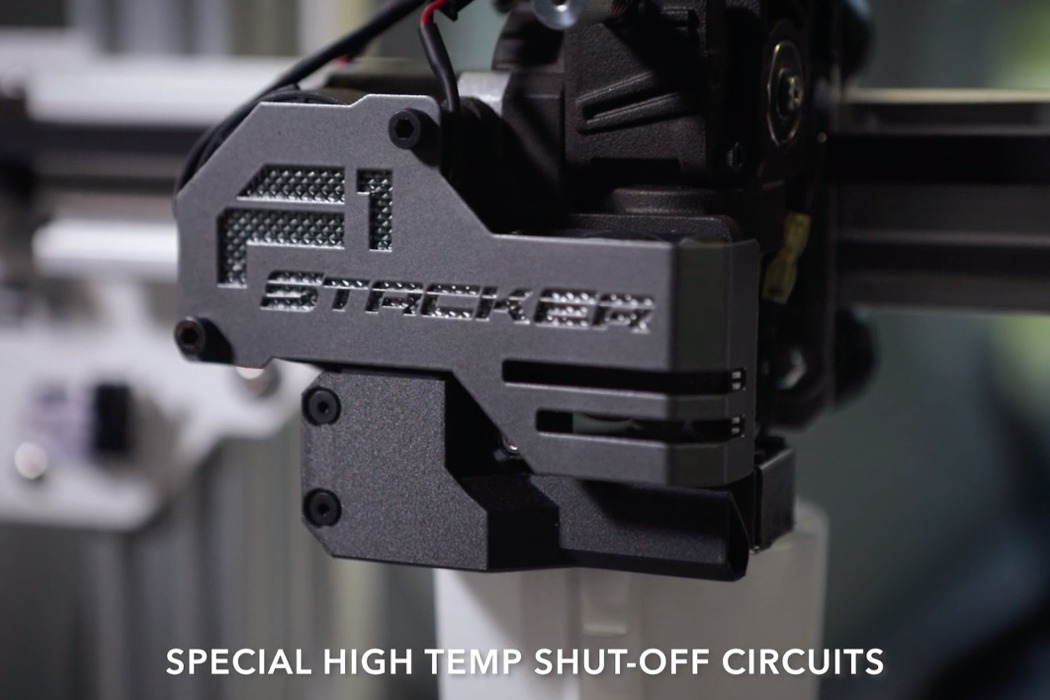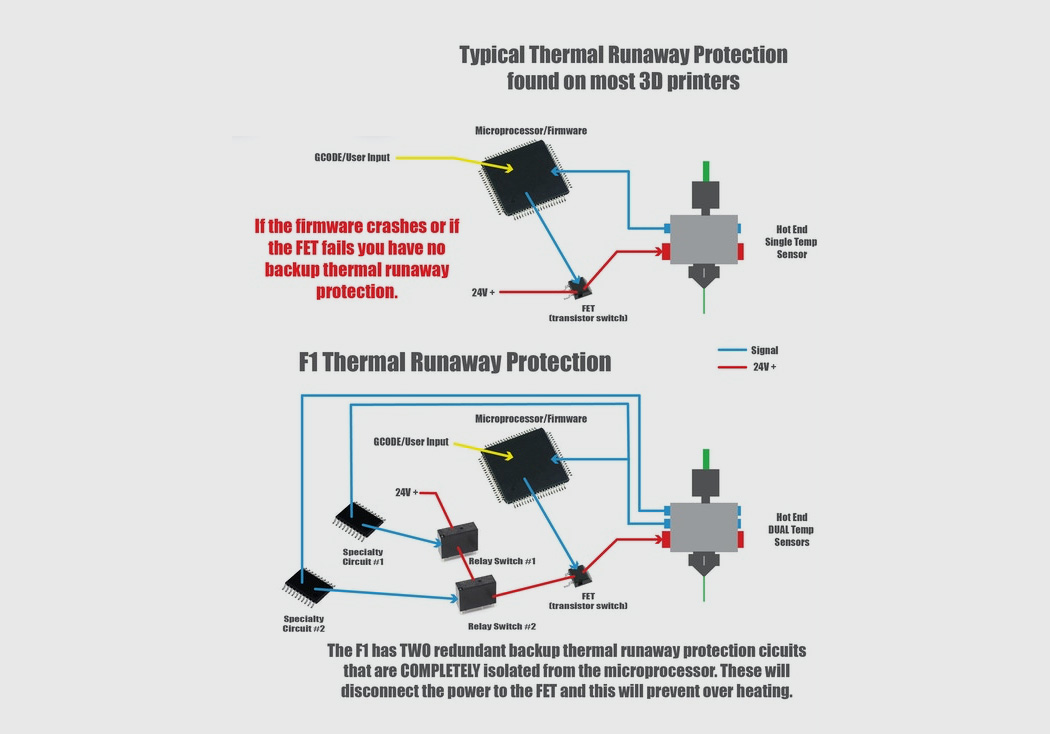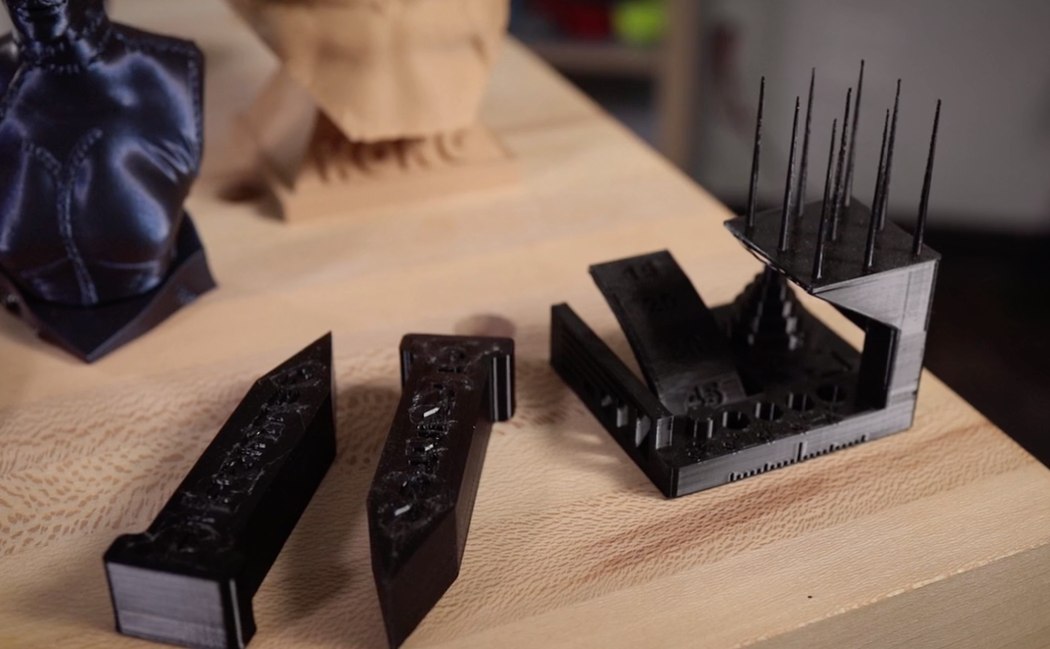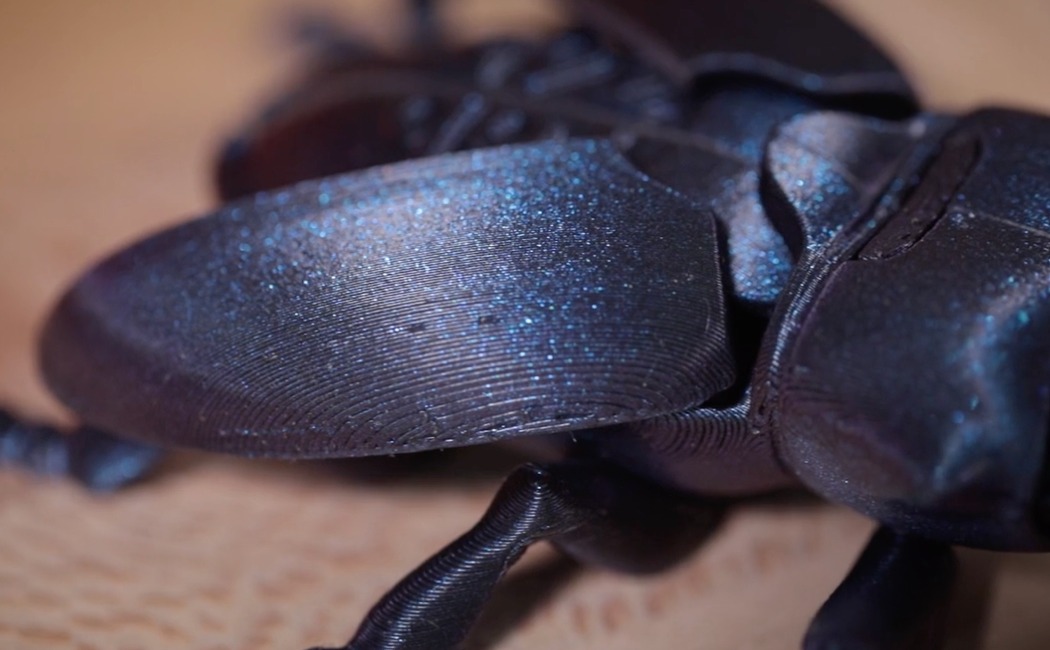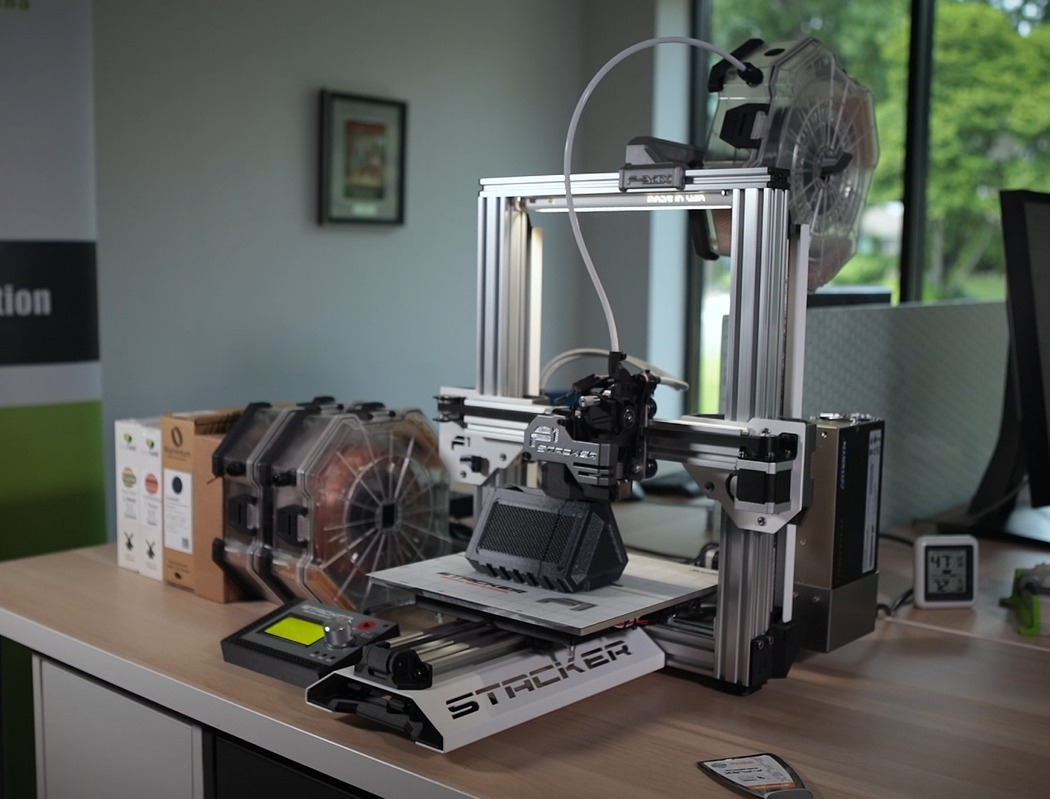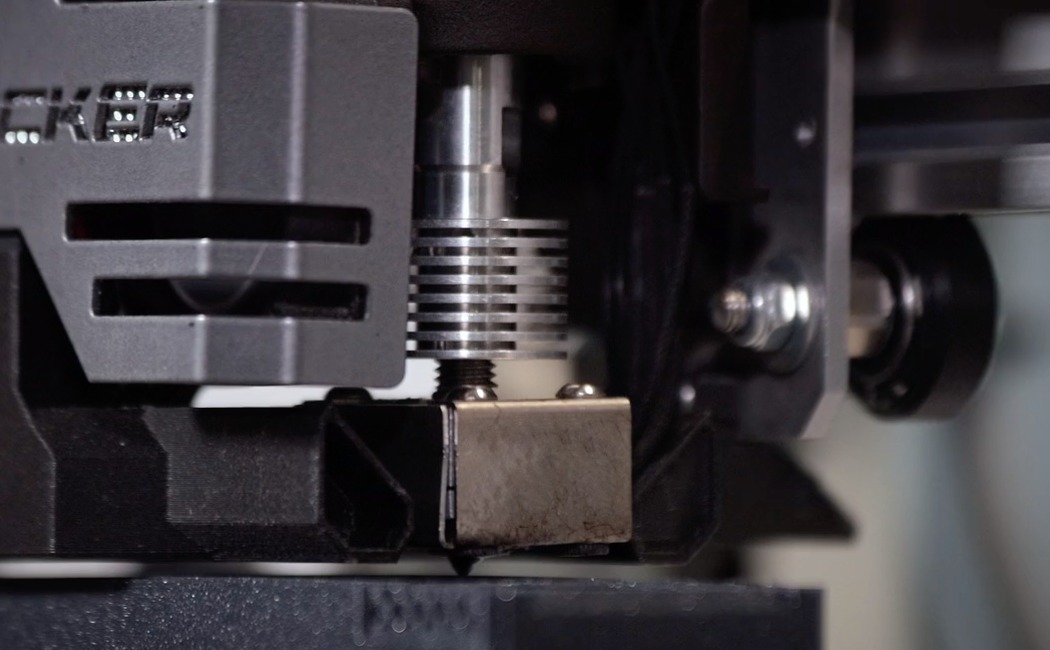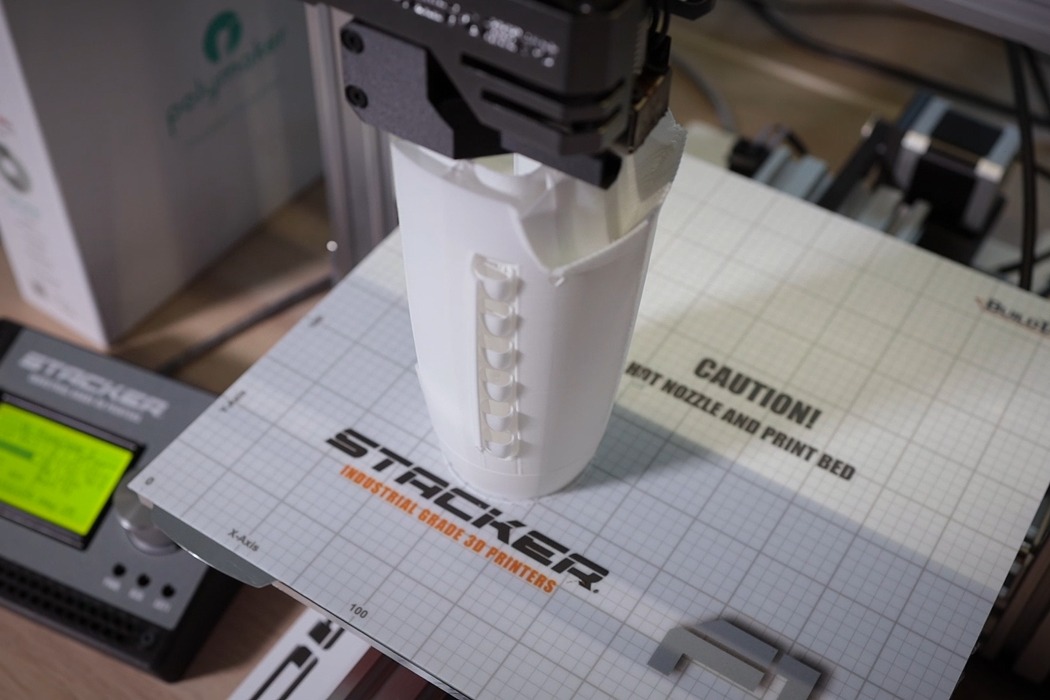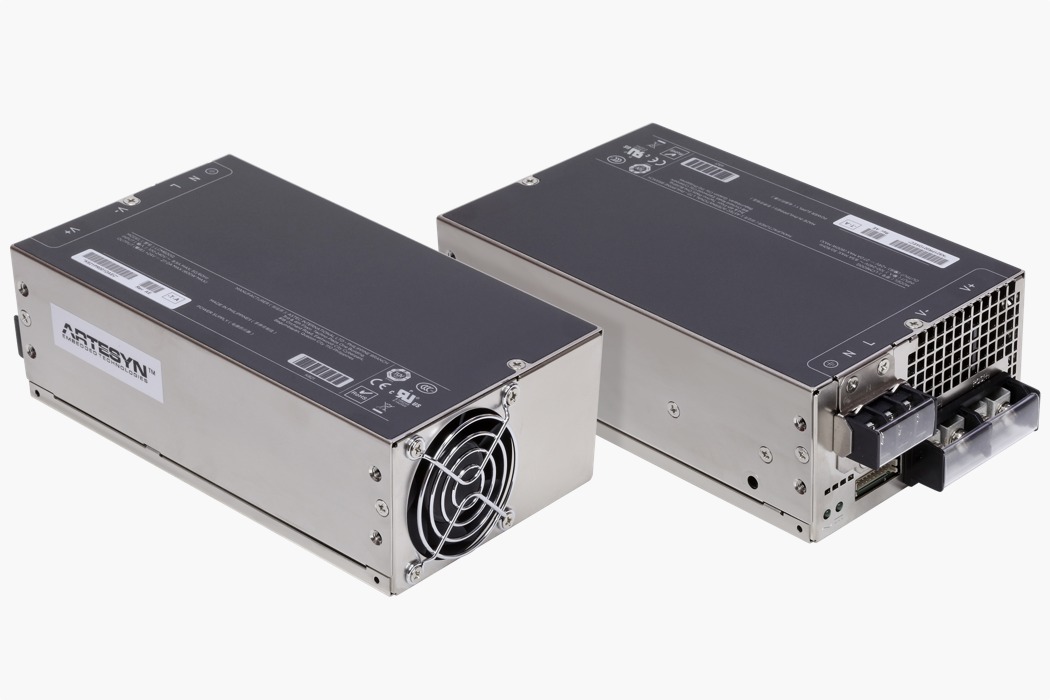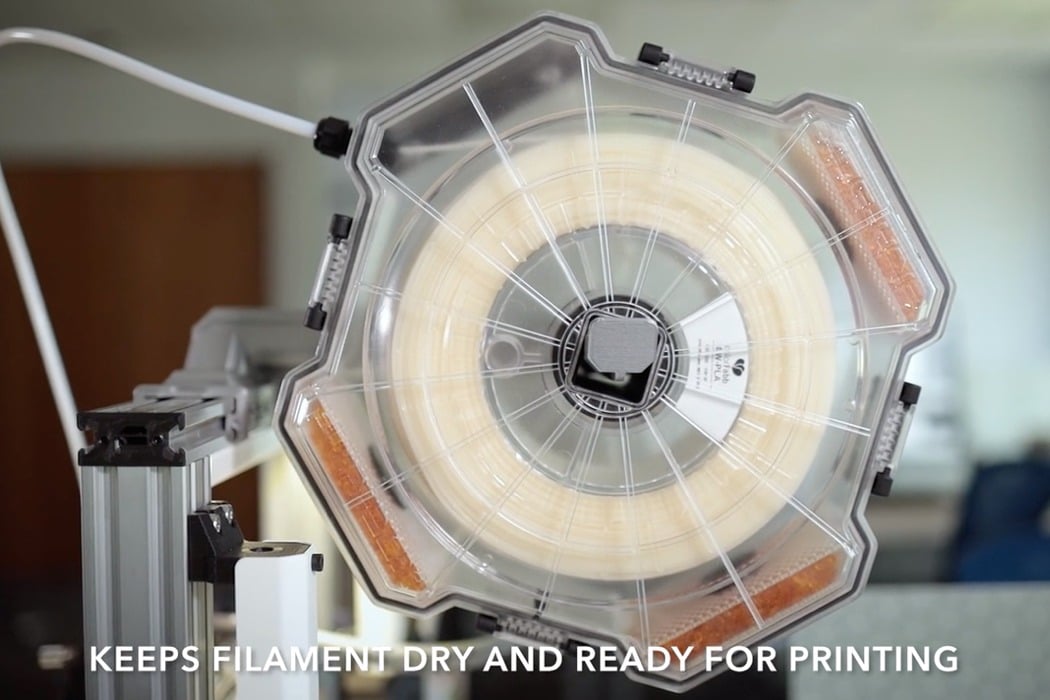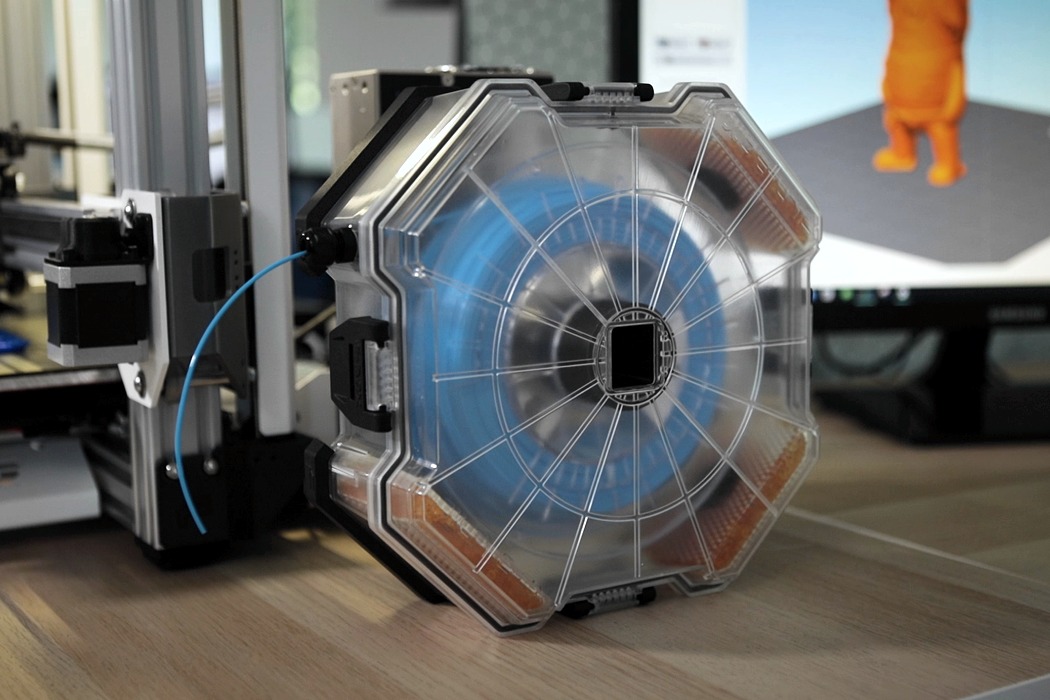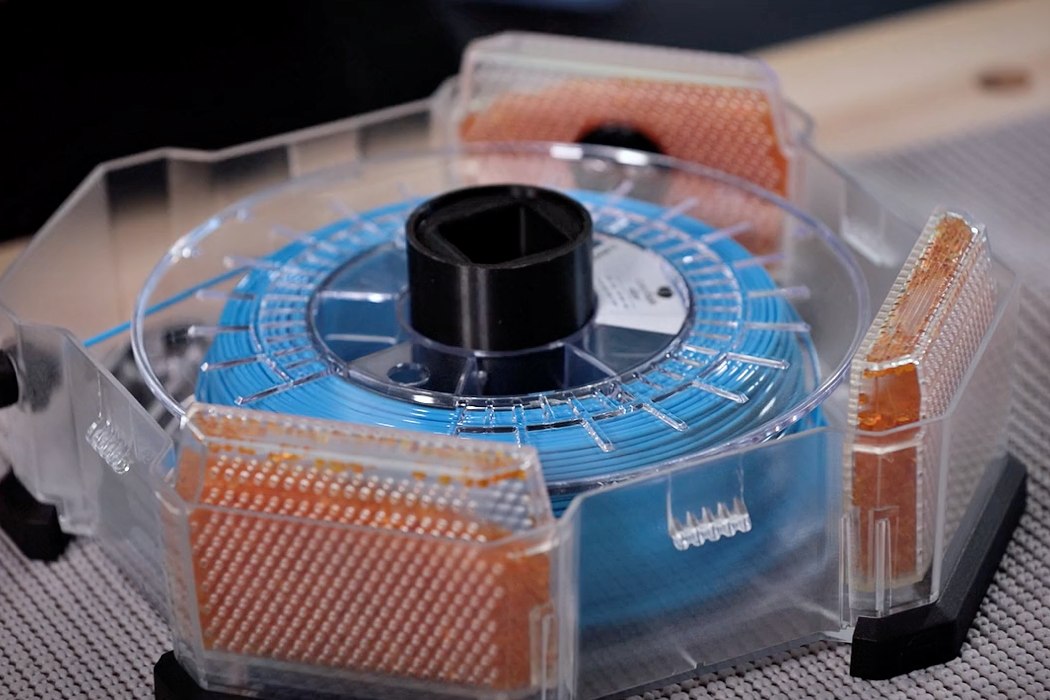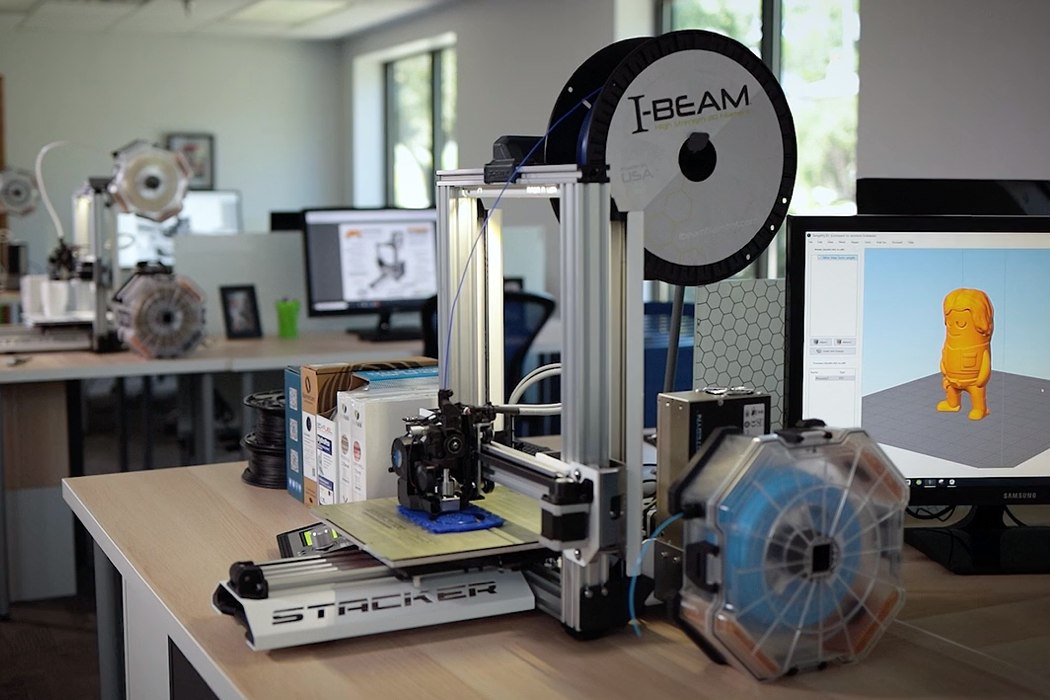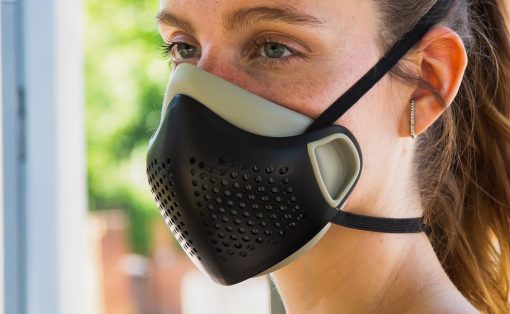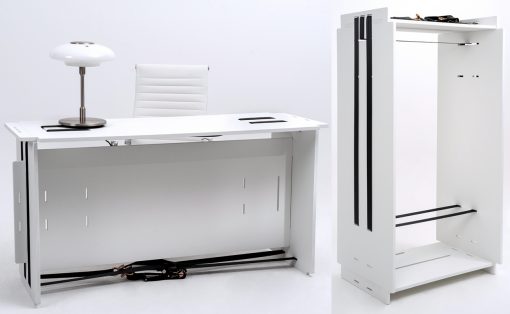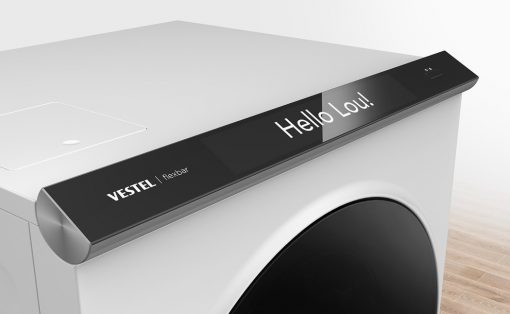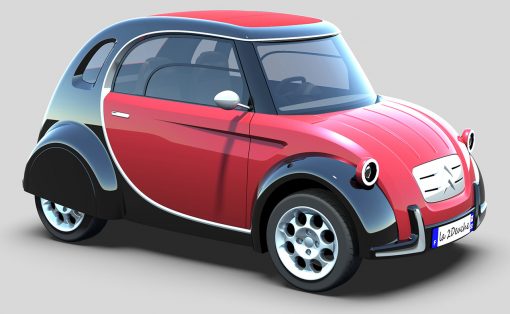https://www.kickstarter.com/projects/783463718/stacker-f-series-essential-3d-printers-and-accessories
I’ve been pretty vocal about how 3D printing is the key to surviving the pandemic. Whether it’s instantly printing face-shields, prototyping respirators, or just relying less on overseas prototyping companies to supply you with prototypes, 3D-printers can help you ideate, test, and produce your designs faster… and it’s only a matter of time before they become an integral part of studios, schools, hospitals, and businesses. Norston Fontaine, the man behind Stacker’s F1 3D Printer agrees too.
Fontaine’s dedicated his life to perfecting his craft and designing 3D printing machines that are consumer-friendly, yet state-of-the-art. The F1 3D printer is just remarkably versatile in the number of filaments and materials it can handle, as well as incredibly accurate too, with a build quality that Fontaine prides himself in. Take a look at some of the F1’s prints and you’ll be surprised at the immaculate surface quality and detail, and the very visible lack of stringing, or blemishes caused by over-extrusion. The F1 3D printer comes with Stacker’s special hot ends fitted with Vanadium-alloy-coated nozzles that are guaranteed to last a lifetime. The F1’s hot ends are easily replaceable too, allowing you to effectively choose between different nozzle sizes as well as making maintenance easier. The hot ends use a direct-drive extrusion system that helps it achieve perfectly consistent prints every time, and a temperature-monitoring sensor immediately pauses the job if it detects any overheating – a feature that’s extremely useful during long print-cycles. The entire F1 is designed and manufactured in the USA, all the way from the controller-board and the firmware, to the actual printer frame itself that comes fitted with special vibration dampeners to increase the printer’s overall accuracy.
The F1 is just one part of Stacker’s innovation in 3D printing. The other part is what Fontaine likes to call his secret sauce – dry filament printing. Atmospheric moisture (even in small amounts) can end up having an effect on filaments by changing how they melt, extrude, and set. The F-BOX (which can be universally added to any existing 3D printer) is a special dehumidifying container that holds the filament reel. It comes with an industrial-grade desiccating agent that helps absorb atmospheric moisture to keep the filament as dry as possible. The desiccants change color when they’ve absorbed all the moisture they can hold – and once they begin turning from their bright orange to a dull green, they can simply be recharged by being popped in a food dehydrator or microwave (allowing you to use them infinitely). The F-BOX increases the potential of your filament, and can be mounted on or connected to any existing printer to give you better results. If you’re the kind to buy filaments in bulk, the Stacker team even offers the F-PAC, a large cartridge of desiccant that can be stored along with your filaments, keeping humidity away to increase their shelf-life.
With the F1, Fontaine hopes our futures will be more self-reliant when it comes to quick prototyping and fabrication. The F1 is an incredibly advanced printer that’s been calibrated and tested over time to produce consistent results, but at the same time, it’s just as easy to use as any consumer-grade 3D printer. The F1 even took a stab at the Autodesk/Kickstarter FDM print test and the results are impressive, to say the least. Along with the F-BOX and the F-PAC, Stacker’s F1 3D printer brings an entire prototyping station into your home. It was designed to accelerate the movement towards relying less on external sources and embracing the ability to ideate, prototype, and produce right from the comfort of your own workspace.
Designers: Norston Fontaine & Team Stacker
Click Here to Buy Now: $2100 $3000 ($900 off). Raised over $290,000.
STACKER F1 3D Printer – The Essential Office Machine
Built for every type of business, school, or organization, the F1 is a true industrial grade printer, so this means it’s perfect for work groups big and small. It’s also ideal for print farms and maker spaces. The F1 is a high performance printer with advanced safety features. This means it’s safe enough for hospitals, research labs, schools, offices, and of course, your home.
Why the F1? Safety, Print Quality & Reliability
Safety – Many users run their printers unattended. That’s why they built a printer with unmatched safety features.
Advanced thermal runaway protection. What’s thermal runaway? Basically, it’s when your hot end keeps heating up and won’t shut down until you cut the power. This can happen if your controller board fails, the temp sensor fails, the temp sensor gets dislodged from the heater block, or your firmware freezes and fails to reset.
Most printers on the market today only rely on firmware to protect against thermal runaway. Software is not good enough. To make matters worse a lot of cheap printers didn’t even enable these basic software protections, even though they are built into the firmware. In the vast majority of cases firmware protection works well at protecting you. However, no firmware is going to protect you if it crashes or if you experience a controller board or temp sensor failure.
The F1 solution. That’s why the F1 incorporates redundant specialty electronic power cut-off circuits. These specialty circuits are completely independent from the firmware or other software controls. In other words, a bad transistor or crashed firmware is not going to prevent the specialty safety circuit from doing its job. The F1 also uses two temp sensors for added security. That’s right, two temp inputs, and each input is run through its own specialty circuit. If the circuit reads a temp higher than 325 C it will cut the power to your hot end. Please see the illustration below.
Better temp sensors, mounted better. The F1 uses PT100 temperature sensors made from Platinum, so they are extremely reliable. Furthermore, they designed their hot end to specifically prevent the temp sensors from dislodging during use. First, they use TWO temp sensors to add redundancy, as mentioned above. Second, they use multiple fastening points to retain the sensors. Third, their temp sensors are potted into metal cartridges, which allows us to attach them more securely. Finally, they engineered the cable management of the hot end wires to further prevent the sensors from coming loose.
Special hot end heat break and heat sink. They also use a special Bi-Metallic heat break sourced from Slice Engineering to keep the heat in the heater block instead of migrating upward into the rest of the hot end assembly. Not only does this improve the printing process, it makes the hot end safer overall. Finally, they designed their own heat sink to bleed off any excess heat that rises from the heat break.
The filament drive and hot end mount uses UL approved flame retardant materials for an extra level of safety. The hot end heat sink and heat break were designed to bleed off the heat before it can rise and damage the other components on the print head.
Insulated and guarded heater block. The stainless steel guard around the heater block helps reduce severe burning.
All connectors are genuine MOLEX brand, not some cheap offshore knockoff found on many 3D printers. Moreover, they selected connectors that are rated to carry at least double the circuits required amperage. If that wasn’t enough, they only use glow wire rated connector housings. This means that if you take a hot iron (the glow wire) and pushed it into the connector, the connector would just melt instead of burning up.
Special Z rod guards protect your hair and fingers from getting pinched or wrapped up. Each Z Axis lead screw gets its own guard. This also keeps the lead screws cleaner and reduces maintenance.
Advanced firmware. The F1 uses a modular firmware by Repetier that includes the standard thermal runaway protections found in other firmwares, but it also includes a watchdog system that helps identify firmware crashes. If a crash is detected it resets the printer to rectify the situation.
F1 Print Quality
How do you achieve best-in-class print quality? You do it by getting rid of resonance, zero crossing moire patterns, ringing, z wobble, thermal banding, and other artifacts that show up in your prints. This requires engineering, proper selection of components, and lots of testing.
Engineering. They started by making the F1 frame and gantry system as strong and rigid as we could. The frame is then perfectly squared during assembly, and will stay that way for the life of the printer. Next, they engineered a simple but effective chassis dampening system using visco-elastic polymer because it has a very high dampening coefficient. It combines shock absorption, good memory, vibration isolation and vibration damping characteristics.
Next, they designed the best filament drive and hot end we could. Our filament drive uses our special filament drive gears and gear reduction design for increased power and precision. The drive gears are hardened steel and the reduction gears are stainless steel, not plastic. The F1 hot end is all metal and carbon fiber ready. The key to making a high performance hot end that works with a large spectrum of filament types is to use a heat break that has the highest temp gradient you can find.
Accuracy. 3D printing is about more than just creating “perfect” and pretty looking prints. Best-in-class print quality is also about parts that are accurate, and fit together. Parts that have sharp corners and no over extrusion.
The F1’s firmware incorporates a hot end pressure balancing feature that reduces the extruder movement precisely as needed before the hot end reaches any portion of the part that slows down. This allows the pressure inside the hot end to release and do the extruding instead of the filament drive. In fact, the F1 doesn’t require any slicer tricks, like coasting or wiping (combing).
This model by clockspring3d is a great example of what print-in-place looks like.
This is varioshore filament from colorFabb. You can change the level of softness by changing the temperature. This part is all the same filament.
F1 Reliability
Better by design. We all know that hot ends jam for a variety of reasons. The cause is usually wet filament, improper retract settings, bad temp settings, poor quality filament (bad diameter tolerance or debris in the filament) and bad hot end engineering. Oh, leaving the hot end idle at full temp for a few hours is another great way to jam your hot end! If you’re like us you’re not perfect, that’s why the F1 hot end can be changed in seconds. This makes it fast and easy to change nozzles too.
Premium Components. The F1 utilizes the 600 watt power supply built by Artesyn. The price of this key component is over $250. The power supply incorporates PFC (power factor correction) which ensures that input voltage and current waveforms are as sinusoidal as possible. Besides, PFC is required by international regulations. Cheap power supplies don’t use PFC and are not as reliable. The F1 3D Printers’ power supply carries a 2 year warranty and should run for many years under normal use.
F-BOX – Essential Accessory
There is one performance upgrade that is better than all the rest combined. This upgrade is guaranteed to make your prints stronger and better looking, and this upgrade works on any 3D printer. It’s called dry filament.
The problem is that there is no easy and quick way to dry your filament, and keep it that way while you’re printing. If there was we would all be doing it. The current ways of doing it are just not very convenient, compact, and effective.
The F-BOX works with ALL 3D printers. They already have designed custom mounting brackets for most popular printers. Or, simply feed your filament from the desktop.
The F-BOX is super easy to load.
Click Here to Buy Now: $2100 $3000 ($900 off). Raised over $290,000.

